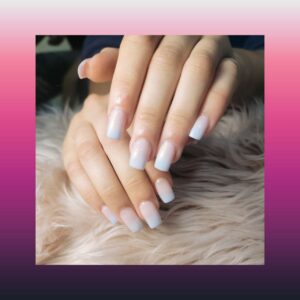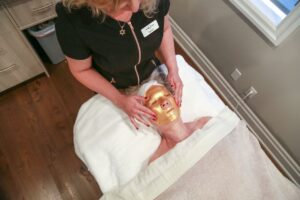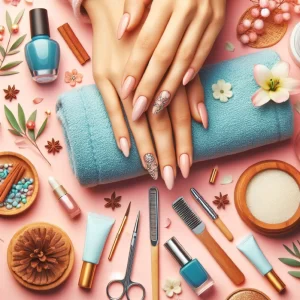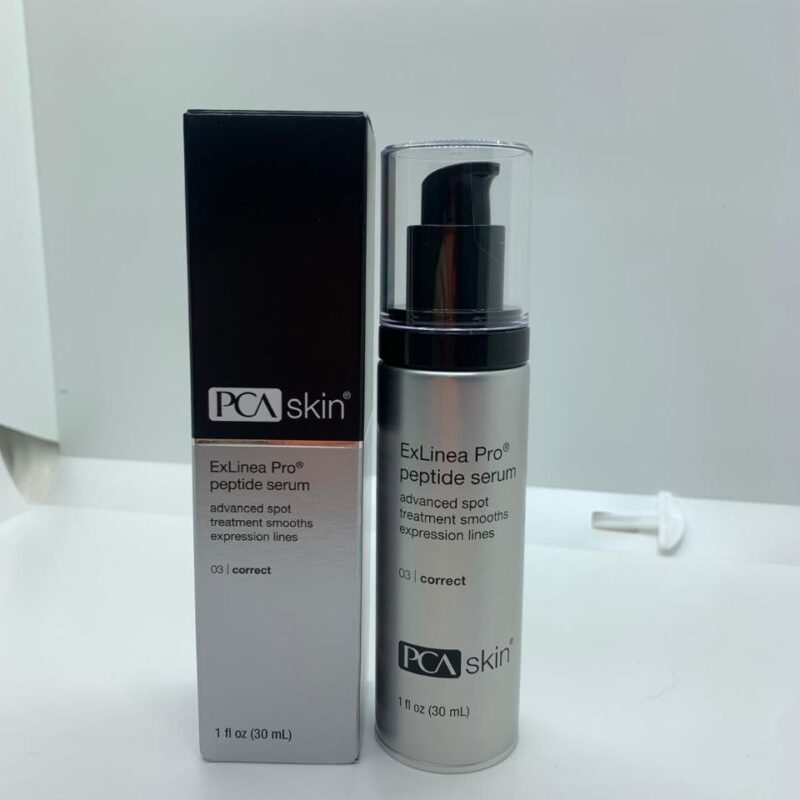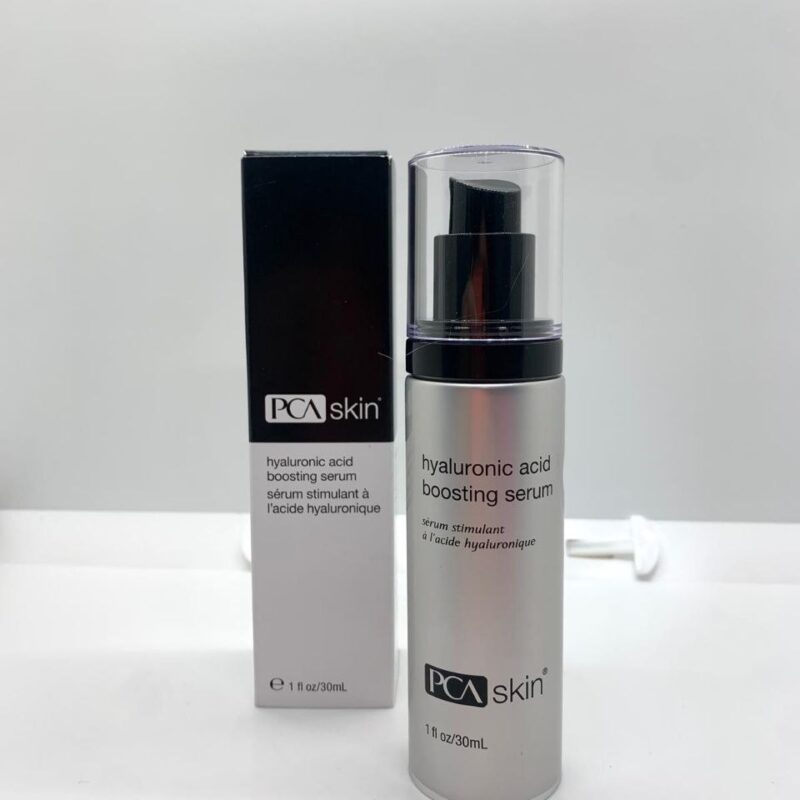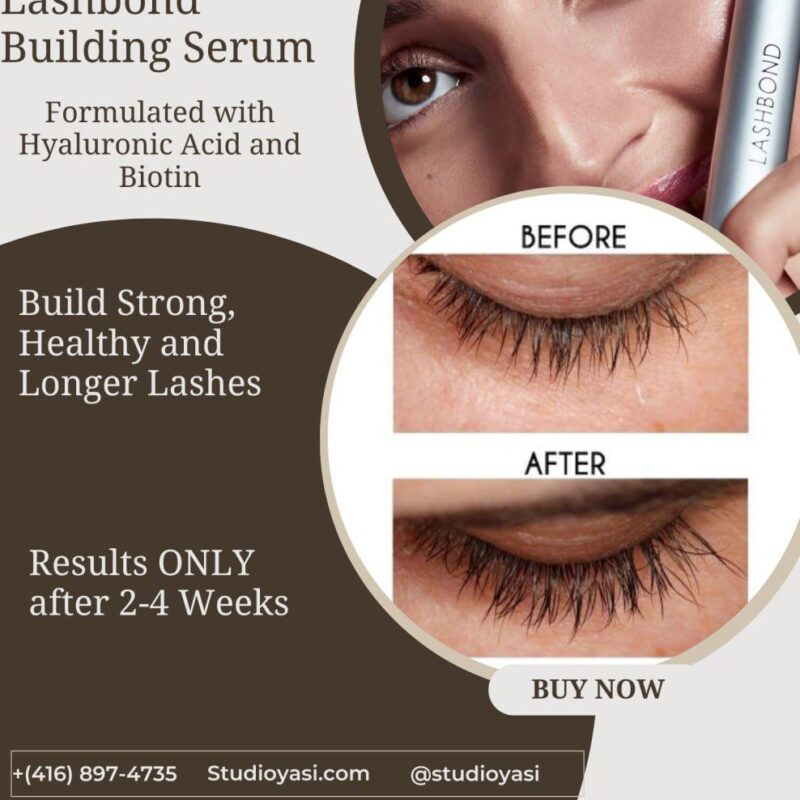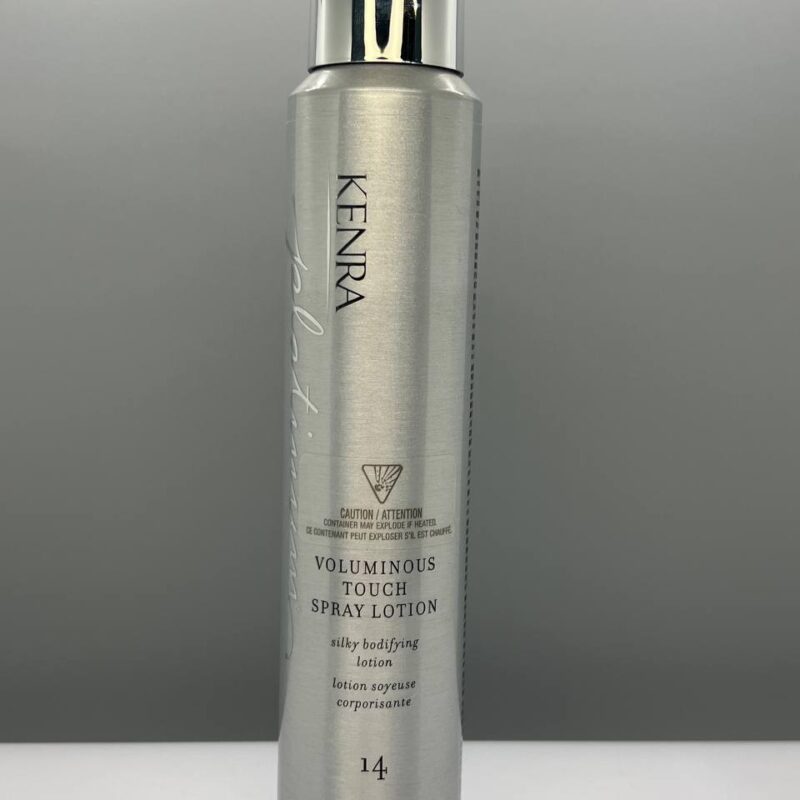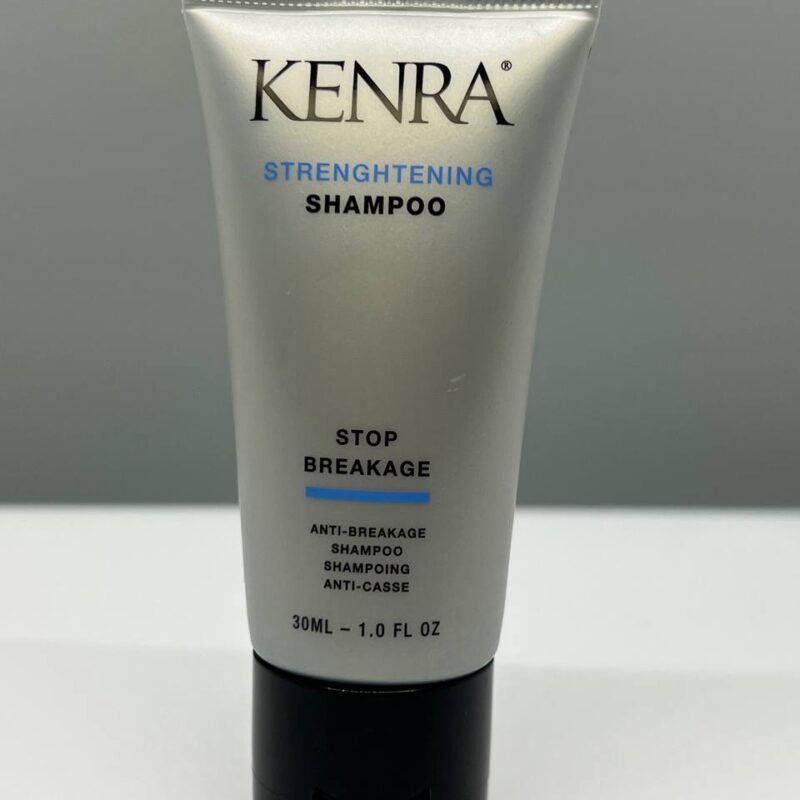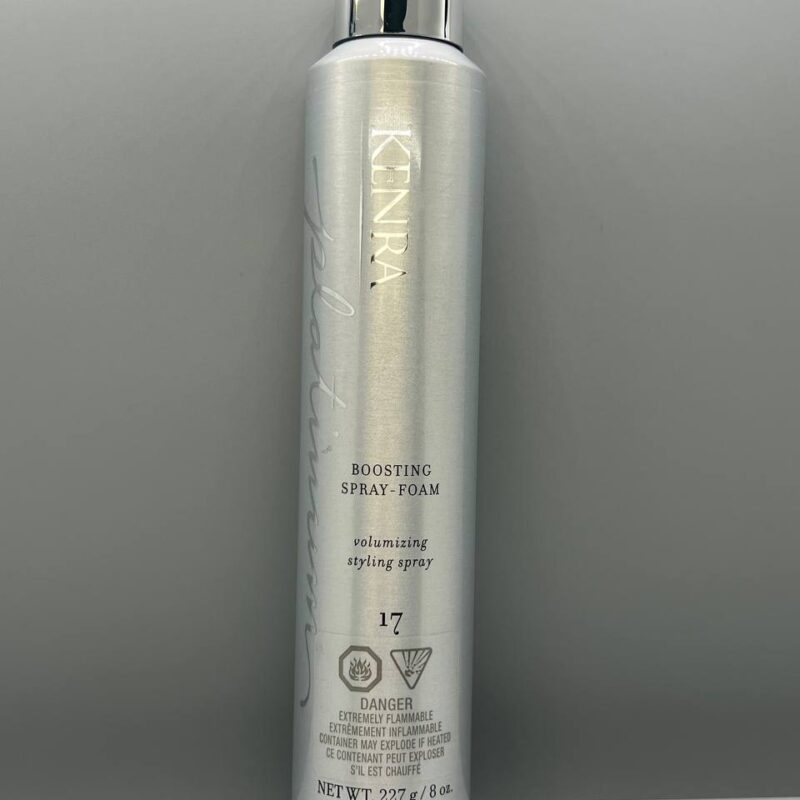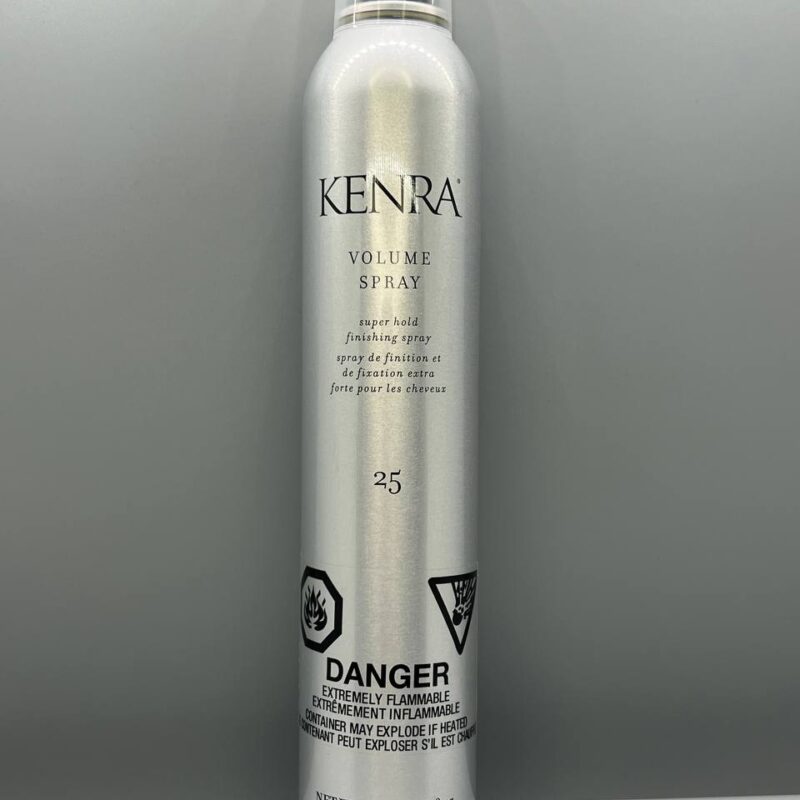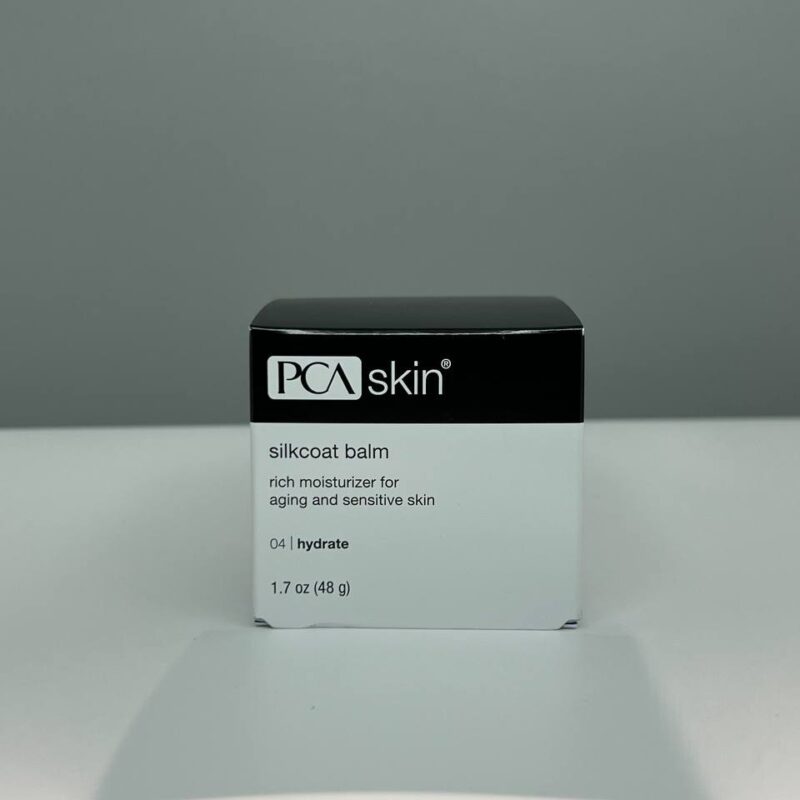Healthy nails are not only an aesthetic asset but also indicative of overall well-being. Nails, composed of keratin, serve as a protective covering for the fingertips and toes. They can reflect signs of various health conditions, including nutritional deficiencies, infections, or underlying diseases.
Maintaining healthy nails involves proper hygiene practices, such as keeping them clean and dry to prevent fungal infections. Regular trimming and shaping help prevent breakage and promote growth. A balanced diet rich in vitamins, minerals, and proteins supports nail health, while staying hydrated ensures moisture balance.
Signs of Healthy Nails
Here are some signs of healthy nails:
- Smooth surface: Healthy nails should have a smooth, even surface without ridges, grooves, or pits.
- Consistent color: Nails should have a consistent pink or pinkish-white color. Discoloration, such as yellow, brown, or white streaks, may indicate an underlying condition.
- Firm and thick: Healthy nails are firm and thick enough to provide protection for the nail bed. Thin, brittle, or peeling nails can be a sign of deficiency or illness.
- Curved shape: Nails should have a gentle curve from the base to the tip, following the natural shape of the fingertip.
- Smooth cuticles: The cuticles (skin surrounding the base of the nail) should appear smooth and intact, without redness, swelling, or irregularities.
- No separation: Healthy nails should not separate from the nail bed or show signs of fungal infection, such as thickening or crumbling.
- Growth rate: Nails should grow at a steady pace, typically around 3 mm per month for fingernails and 1 mm per month for toenails.
- No white spots: Small white spots on the nails can be harmless, but larger white patches or streaks may indicate a vitamin or mineral deficiency or an underlying health condition.
Maintaining proper nutrition, hydration, and avoiding trauma or excessive exposure to chemicals can help promote healthy nail growth and appearance.
Introducing 10 of Summer 2024’s Hairstyle Trends
Signs of Unhealthy Nails
Here are some signs that can indicate unhealthy or abnormal nails:
- Discoloration: Yellow, brown, green, or black discoloration of the nails can be a sign of fungal infection, diabetes, or other medical conditions.
- Thickening: Thickened, crumbly, or distorted nails may be a symptom of fungal infection (onychomycosis) or psoriasis.
- Brittleness: Dry, brittle nails that split or peel easily can be a sign of vitamin or mineral deficiencies, thyroid disorders, or excessive exposure to chemicals or water.
- Ridges or grooves: Vertical ridges or horizontal grooves on the nails can be a normal sign of aging, but they can also indicate nutrient deficiencies, injury, or underlying health issues.
- White streaks: White streaks or lines across the nails may be a sign of low protein levels, kidney disease, or an injury to the nail matrix (base).
- Curved or clubbed nails: Nails that curve downward or have a “clubbed” appearance can be a sign of lung disease, cardiovascular problems, or inflammatory conditions.
- Dark lines or streaks: Dark lines or streaks under the nails (known as melanonychia) can be a symptom of melanoma or other skin cancers, although they can also be caused by injury or certain medications.
- Separation from the nail bed: If the nail separates from the nail bed (onycholysis), it can indicate a fungal infection, psoriasis, or injury to the nail matrix.
- Pitting or dents: Small pits or dents in the nail surface can be a sign of psoriasis, eczema, or alopecia areata (an autoimmune disorder that causes hair loss).
If you notice any persistent or concerning changes in your nails, it’s advisable to consult a dermatologist or healthcare professional for proper evaluation and treatment.
1. Keep your hands very clean
Keeping your hands and nails clean is an important step in maintaining healthy nails. Here are some tips for keeping your hands and nails clean:
- Wash your hands regularly: Wash your hands with soap and warm water several times a day, especially before eating, after using the restroom, and after handling anything dirty or potentially contaminated. This helps remove dirt, bacteria, and other substances that can accumulate under the nails.
- Scrub your nails: When washing your hands, use a soft-bristled nail brush or an old toothbrush to gently scrub under your nails and remove any dirt or debris that may have accumulated there.
- Dry your hands and nails thoroughly: After washing, make sure to dry your hands and nails completely with a clean towel. Moisture trapped under the nails can create an environment for bacteria and fungus to grow.
- Trim and file your nails regularly: Keeping your nails trimmed and filed helps prevent dirt and debris from getting trapped under the nails. Use a nail file or emery board to smooth out any rough edges or snags.
- Avoid biting your nails: Nail-biting can introduce harmful bacteria into your mouth and damage your nails, making them more prone to infection and other issues.
- Wear gloves when necessary: If you’re doing activities that involve exposure to harsh chemicals, cleaning products, or other potentially harmful substances, wear gloves to protect your hands and nails.
electrolysis vs laser hair removal
Maintaining good hand and nail hygiene not only helps keep your nails looking clean and healthy but can also prevent the spread of germs and reduce the risk of nail infections or other nail-related problems.
2. Be gentle on your nails
Being gentle with your nails is crucial for maintaining their health and preventing damage. Here are some tips to be gentle on your nails:
- Avoid harsh chemicals: Exposure to harsh chemicals, such as those found in some nail polish removers, cleaning products, and hair dyes, can weaken and dry out your nails, making them more prone to splitting and peeling.
- Use proper nail care tools: Use high-quality nail clippers, scissors, and files designed specifically for nails. Dull or low-quality tools can cause unnecessary stress and tearing of the nails.
- Clip nails properly: When trimming your nails, avoid cutting them too short or rounding the corners excessively, as this can increase the risk of ingrown nails and other problems.
- File in one direction: When filing your nails, always file in one direction, rather than sawing back and forth, which can cause splitting and peeling.
- Moisturize your nails: Keep your nails and cuticles well-moisturized by using a nail oil or cream regularly. This helps prevent brittleness and cracking.
- Protect your nails: Wear gloves when doing household chores, gardening, or any activities that could potentially damage your nails.
- Avoid excessive nail polish removal: Frequently removing nail polish with harsh removers can dry out and weaken your nails over time. Consider taking breaks from polish or using gentler, acetone-free removers.
- Be mindful of your habits: Avoid habits like nail-biting, picking at your cuticles, or using your nails as tools (e.g., opening cans or bottles), as these can cause damage and increase the risk of infection.
By being gentle and taking proper care of your nails, you can help maintain their strength, flexibility, and overall health, reducing the likelihood of issues like splitting, peeling, and brittleness.
Secrets to growing healthy and strong hair
3. Clip your nails regularly
Clipping your nails regularly is an important part of maintaining healthy nails. Here are some tips for clipping your nails properly:
- Use proper nail clippers: Invest in a good-quality pair of nail clippers or scissors designed specifically for cutting nails. Avoid using dull or poorly made clippers, as they can cause splitting and tearing of the nails.
- Trim nails straight across: When trimming your nails, cut them straight across, avoiding curved or rounded shapes. Leaving sharp corners or cutting too close to the skin can lead to ingrown nails or other issues.
- Don’t cut too short: It’s best to leave a small portion of the nail extending past the tip of your finger. Cutting nails too short can expose the sensitive nail bed and increase the risk of ingrown nails or infection.
- Clip after bathing: Nails are softer and more pliable after bathing or soaking in warm water, making them easier to trim without splitting or cracking.
- File after clipping: Use a nail file or emery board to smooth out any rough edges or jagged areas after clipping your nails. File in one direction, rather than back and forth, to prevent peeling or splitting.
- Clip toenails regularly: Don’t forget to trim your toenails regularly, as well. Overgrown toenails can lead to ingrown nails, discomfort, and even fungal infections if they catch on socks or shoes.
- Establish a routine: Aim to clip your fingernails every 1-2 weeks and toenails every 2-4 weeks, or as needed based on your individual nail growth rate.
Nail Care and Repair Methods | Discover the Best Nail Salon in Bradford, Canada
Regularly clipping your nails not only keeps them looking neat and well-groomed but also helps prevent conditions like ingrown nails, fungal infections, and other nail-related issues that can arise from overgrown or improperly trimmed nails.
10 simple tips to take care of dry hair
4. Prioritize nail health over length
Prioritizing nail health over length is an important step in maintaining strong, healthy nails. Here are some tips to keep your nails healthy without compromising their integrity:
- Avoid excessive length: While long nails may be aesthetically appealing, they are more prone to breaking, splitting, and catching on things, which can damage the nail bed and increase the risk of infection.
- Trim regularly: Keep your nails trimmed to a moderate length, about a quarter-inch past the fingertip. This reduces the likelihood of snagging or tearing them.
- Use proper nail products: Choose high-quality nail polish and nail care products that are free from harsh chemicals like formaldehyde and toluene, which can weaken and discolor nails over time.
- Take breaks from polish: Give your nails a break from nail polish every few weeks to allow them to breathe and prevent staining or brittleness.
- Moisturize regularly: Keep your nails and cuticles hydrated by using a nourishing nail oil or cream daily. This helps prevent splitting, peeling, and cracking.
- Wear protective gloves: When doing household chores, gardening, or any activities that involve exposure to water, chemicals, or physical trauma, wear protective gloves to shield your nails.
- Maintain a balanced diet: Ensure you’re getting adequate vitamins, minerals, and nutrients (like biotin, zinc, and iron) in your diet, as deficiencies can lead to weak, brittle nails.
- Seek professional help: If you experience persistent nail issues, such as discoloration, thickening, or fungal infections, consult a dermatologist or podiatrist for proper treatment.
By prioritizing nail health over length, you can enjoy strong, resilient nails that are less prone to damage and infection, while still maintaining a neat, well-groomed appearance.
5. Always keep a nail file on hand
Keeping a nail file on hand is a simple yet effective way to maintain healthy nails. Here are some reasons why it’s important to always have a nail file with you:
- Smooth rough edges: Even with regular trimming, nails can develop rough edges, snags, or jagged areas that can catch on clothing or cause snagging. Having a nail file allows you to quickly smooth out these rough spots and prevent further tearing or splitting of the nail.
- Reshape nails: As nails grow, they can become uneven or develop an undesirable shape. A nail file allows you to gently reshape your nails and maintain a neat, uniform appearance.
- Remove dirt and debris: Nails can accumulate dirt, debris, or even tiny splinters that can become embedded under the nail. Using a nail file can help dislodge and remove these particles, reducing the risk of infection or irritation.
- Prevent hangnails: Hangnails, or small pieces of torn skin around the nails, can be painful and unsightly. Gently filing the area can help remove hangnails and prevent further tearing or inflammation.
- Maintain cuticle health: Cuticles, the protective skin around the base of the nail, can become dry and ragged. Using a nail file to gently buff and smooth the cuticles can help keep them healthy and prevent painful cracking or peeling.
- Touch-ups on the go: Whether you’re at work, running errands, or traveling, having a nail file on hand allows you to quickly touch up your nails and maintain a well-groomed appearance.
When choosing a nail file, opt for a high-quality emery board or glass file, as these are less likely to cause excessive tearing or damage to the nails. By keeping a nail file within reach, you can address minor nail issues as they arise and maintain healthy, well-groomed nails at all times.
6. Don’t forget to take care of your nail tools
Taking care of your nail tools is an important step in maintaining healthy nails. Here are some tips for keeping your nail tools in good condition:
- Clean and disinfect regularly: After each use, clean your nail clippers, files, and other tools with soap and water to remove any dirt, debris, or residue. Additionally, disinfect them periodically with rubbing alcohol or a disinfectant solution to kill any bacteria or fungi that may be present.
- Dry tools thoroughly: Moisture can lead to the growth of bacteria and fungi on your nail tools. After cleaning, ensure that your tools are completely dry before storing them.
- Replace tools when necessary: Over time, nail clippers and files can become dull or damaged, making them less effective and potentially causing splitting or tearing of the nails. Replace worn-out tools as needed to ensure optimal performance.
- Avoid sharing tools: Sharing nail tools can increase the risk of spreading fungal infections or other nail-related issues. It’s best to have your own set of tools and avoid using those belonging to others.
- Store tools properly: Keep your nail tools in a clean, dry place, such as a sealed container or pouch, to prevent exposure to moisture and contaminants.
- Sanitize before and after use: If you visit a nail salon, make sure that the technician sanitizes their tools before and after using them on you. You can also bring your own tools to the salon for added protection.
- Maintain sharp edges: For nail clippers, regularly sharpen or replace the blades to ensure a clean, precise cut, which can help prevent splitting or tearing of the nails.
By taking proper care of your nail tools, you can ensure that they remain in good condition and reduce the risk of introducing harmful bacteria or fungi to your nails. This simple step can go a long way in promoting overall nail health and preventing nail-related issues.
7. Leave your cuticles alone
Taking care of your nail tools is an important step in maintaining healthy nails. Here are some tips for keeping your nail tools in good condition:
- Clean and disinfect regularly: After each use, clean your nail clippers, files, and other tools with soap and water to remove any dirt, debris, or residue. Additionally, disinfect them periodically with rubbing alcohol or a disinfectant solution to kill any bacteria or fungi that may be present.
- Dry tools thoroughly: Moisture can lead to the growth of bacteria and fungi on your nail tools. After cleaning, ensure that your tools are completely dry before storing them.
- Replace tools when necessary: Over time, nail clippers and files can become dull or damaged, making them less effective and potentially causing splitting or tearing of the nails. Replace worn-out tools as needed to ensure optimal performance.
- Avoid sharing tools: Sharing nail tools can increase the risk of spreading fungal infections or other nail-related issues. It’s best to have your own set of tools and avoid using those belonging to others.
- Store tools properly: Keep your nail tools in a clean, dry place, such as a sealed container or pouch, to prevent exposure to moisture and contaminants.
- Sanitize before and after use: If you visit a nail salon, make sure that the technician sanitizes their tools before and after using them on you. You can also bring your own tools to the salon for added protection.
- Maintain sharp edges: For nail clippers, regularly sharpen or replace the blades to ensure a clean, precise cut, which can help prevent splitting or tearing of the nails.
By taking proper care of your nail tools, you can ensure that they remain in good condition and reduce the risk of introducing harmful bacteria or fungi to your nails. This simple step can go a long way in promoting overall nail health and preventing nail-related issues.
8. Protect your nails with a base coat
Leaving your cuticles alone is an important step in maintaining healthy nails. Here’s why you should avoid cutting or pushing back your cuticles:
- Protective barrier: Cuticles act as a protective barrier for the nail root, sealing the area to prevent entry of bacteria, fungi, and other potential infections. Cutting or pushing them back can create an opening for these pathogens to enter.
- Risk of infection: Cutting or damaging the cuticle area can lead to small cuts or tears, which can become entry points for bacteria and fungi, potentially resulting in painful infections like paronychia (inflammation around the nail).
- Increased nail growth issues: The cuticle helps guide the nail as it grows out. Removing or damaging the cuticle can disrupt this process, leading to ingrown nails, ridges, or other nail growth abnormalities.
- Increased dryness and cracking: Cuticles help keep the nail and surrounding skin moisturized. Cutting or pushing them back can expose the delicate area to dryness, cracking, and peeling.
- Potential for permanent damage: Aggressive cuticle removal or cutting can cause permanent damage to the nail matrix (the area where the nail grows from), leading to deformities or abnormal nail growth.
- Instead of cutting or pushing back your cuticles, it’s recommended to gently push them back with a soft towel after bathing or showering when they are softer and more pliable. You can also apply a cuticle cream or oil to keep the area moisturized and healthy.
If you have severely overgrown or thickened cuticles, it’s best to seek professional help from a qualified nail technician or podiatrist, who can properly and safely trim or treat the cuticles without causing damage or increasing the risk of infection.
9. Read the labels on your nail polish
Reading the labels on your nail polish is an important step in maintaining healthy nails. Here’s why you should pay attention to the ingredients in your nail polish:
- Avoid harmful chemicals: Many conventional nail polishes contain potentially harmful chemicals such as formaldehyde, toluene, dibutyl phthalate (DBP), and camphor. These can be absorbed through the nails and may cause allergic reactions, respiratory issues, or other health problems with prolonged exposure.
- Choose “3-free” or “5-free” formulas: Look for nail polishes labeled as “3-free” or “5-free,” which means they are free from the three most harmful chemicals (formaldehyde, toluene, and DBP) or five additional chemicals (including formaldehyde resin and camphor).
- Identify potential allergens: Some nail polish ingredients, such as fragrance or dyes, can cause allergic reactions or skin irritation in some individuals. Reading the labels can help you identify and avoid potential allergens.
- Look for nourishing ingredients: Some nail polish brands include nourishing ingredients like vitamins, proteins, or oils that can help strengthen and condition your nails. These can be beneficial for maintaining nail health.
- Consider water-based formulas: Water-based nail polishes tend to be less drying and more breathable for your nails compared to traditional solvent-based formulas.
- Pay attention to expiration dates: Nail polish can separate or become thick and gloopy over time, making it more difficult to apply and potentially compromising the quality. Check expiration dates and replace polishes that have been open for an extended period.
- Follow usage instructions: Some nail polishes may have specific application or removal instructions, such as using a base or top coat, or avoiding certain solvents during removal. Following these instructions can help preserve the health of your nails.
By reading the labels on your nail polish and choosing safer, more nourishing formulas, you can enjoy beautiful nails while minimizing exposure to potentially harmful chemicals and keeping your nails in optimal condition.
10. Use a top coat to prevent nail chips
Using a top coat is an excellent way to protect your manicure and prevent nail chips, helping to maintain healthy, beautiful nails. Here are some reasons why you should use a top coat:
- Extends the life of your manicure: A top coat acts as a protective seal over your colored nail polish, preventing chipping, peeling, and fading. This can help your manicure last longer, reducing the need for frequent touch-ups or complete removals.
- Adds shine and glossy finish: Top coats often contain ingredients that enhance the shine and glossy appearance of your nails, giving them a polished, professional look.
- Protects against staining: Like a base coat, a top coat can help prevent staining or discoloration of your natural nails by creating a barrier between your nail and the colored polish.
- Smooths out imperfections: A top coat can help smooth over any minor imperfections or streaks in your nail polish application, creating a more uniform and flawless finish.
- Hardens and strengthens nails: Some top coats contain strengthening ingredients like resins or polymers that can help harden and reinforce the nail, reducing the risk of splitting, peeling, or breaking.
- Protects against yellowing: Top coats can help prevent yellowing or discoloration of your nails caused by exposure to UV light, water, or other environmental factors.
- Allows for easy touch-ups: If a small chip or nick occurs, a top coat makes it easier to touch up just the affected area without having to completely redo your entire manicure.
When applying a top coat, be sure to use thin, even layers and allow each coat to dry completely before adding the next. Reapplying a fresh top coat every few days can help extend the life of your manicure and keep your nails looking their best.
11. Indulge in acrylic or gel treatments sparingly
Indulging in acrylic or gel nail treatments sparingly is recommended to maintain healthy nails. While these treatments can provide a long-lasting, flawless look, they can also be damaging if not done properly or used excessively. Here are some reasons why you should use acrylic or gel treatments sparingly:
- Thinning of natural nails: The process of applying and removing acrylics or gels can cause thinning and weakening of your natural nails over time, making them more prone to splitting, peeling, and breaking.
- Dehydration and brittleness: The adhesives and solvents used in these treatments can be drying and dehydrating to your nails, leading to increased brittleness and potential nail breakage.
- Risk of fungal infections: If not properly cleaned and sterilized, the tools and equipment used for acrylic or gel applications can harbor fungal spores, which can lead to nail infections.
- Damage to nail bed: Improper removal techniques, such as excessive filing or prying, can cause trauma to the delicate nail bed, leading to potential nail deformities or separation from the nail bed.
- Allergic reactions: Some individuals may be allergic to the ingredients used in acrylic or gel products, resulting in skin irritation, redness, or other adverse reactions.
- Difficulty in maintaining nail health: It can be challenging to properly care for and maintain the health of your natural nails while wearing acrylics or gels, as they can prevent essential moisture and nutrients from reaching the nail bed.
If you do choose to get acrylic or gel treatments, it’s important to take breaks between applications to allow your natural nails to recover and breathe. Make sure to go to a reputable salon that follows proper sanitization and application techniques, and avoid excessive filing or buffing of your natural nails during the removal process .Additionally, consider using these treatments sparingly, reserving them for special occasions, and opting for more natural, breathable alternatives, such as regular nail polish or nail strengtheners, for everyday wear.
12. Moisturize your hands and nails regularly
Moisturizing your hands and nails regularly is crucial for maintaining healthy nails. Here are some important reasons why you should make moisturizing a part of your nail care routine:
- Prevents dryness and brittleness: Dry nails are more prone to splitting, peeling, and breaking. Moisturizing helps keep your nails flexible and less likely to become brittle.
- Improves nail growth: Nails require moisture to grow properly. Keeping your nails and the surrounding skin hydrated can promote healthy nail growth and prevent ridges or other growth abnormalities.
- Reduces hangnails and torn cuticles: Dry, cracked cuticles and hangnails are not only unsightly but can also lead to painful tears and potential infection. Moisturizing helps keep cuticles supple and less prone to tearing.
- Prevents peeling and flaking: When nails become excessively dry, they can start to peel or flake, which can weaken the nail and make it more susceptible to further damage.
- Improves absorption of nutrients: Nails that are well-moisturized can better absorb and utilize nutrients from nail treatments, vitamins, and other nourishing products.
- Enhances appearance: Smooth, hydrated nails and hands simply look healthier and more attractive than dry, rough ones.
- Promotes overall hand health: Moisturizing your hands and nails helps keep the skin around your nails soft and supple, reducing the risk of dryness, cracking, and premature aging.
Look for moisturizers specifically formulated for nails and hands, as they often contain nourishing ingredients like vitamin E, jojoba oil, or shea butter. Apply a small amount to your nails, cuticles, and the surrounding skin after washing your hands or taking a bath or shower, when the skin is most receptive to moisture.
Conclusion
In conclusion, maintaining healthy nails is not just about aesthetics but also reflects overall health and well-being. By practicing good hygiene, proper nutrition, and gentle care routines, one can promote strong, flexible, and beautiful nails. Paying attention to nail health not only enhances appearance but also contributes to overall confidence and self-care.
Introducing 10 of Summer 2024’s Hairstyle Trends
FAQs
Healthy nails are generally smooth, strong, and free from discoloration, ridges, or abnormalities. They should have a pinkish hue with a white crescent-shaped area at the base known as the lunula.
You can maintain healthy nails by practicing good hygiene, avoiding harsh chemicals, wearing gloves when using detergents or chemicals, keeping nails clean and dry, eating a balanced diet rich in nutrients, and avoiding habits like biting nails or picking at cuticles.
Yes, a balanced diet rich in vitamins, minerals, and proteins is essential for healthy nail growth. Nutritional deficiencies, such as insufficient intake of iron, zinc, or biotin, can lead to brittle or weak nails.
Yes, changes in nail color, texture, thickness, or shape can indicate underlying health issues. For example, yellowing nails may indicate a fungal infection, while spoon-shaped nails may suggest anemia or iron deficiency.
You can strengthen weak nails by regularly moisturizing them, avoiding excessive use of nail polish or harsh chemicals, using a protective base coat, and incorporating biotin or other nail-strengthening supplements into your diet.
If you notice persistent changes in your nails or experience pain, swelling, or signs of infection, it’s advisable to consult a dermatologist or healthcare professional for proper diagnosis and treatment.
Yes, certain nail care products containing harsh chemicals or excessive acetone can weaken nails and lead to dryness or brittleness. Opting for gentle, nourishing nail care products and moisturizing regularly can help maintain nail health.


